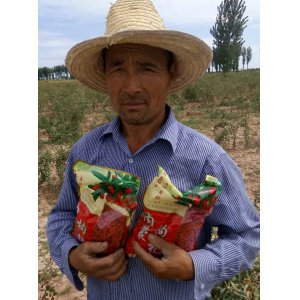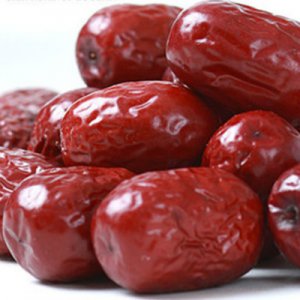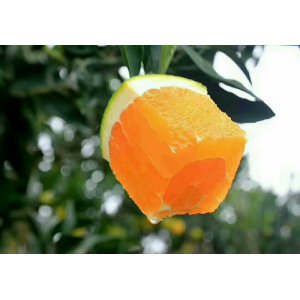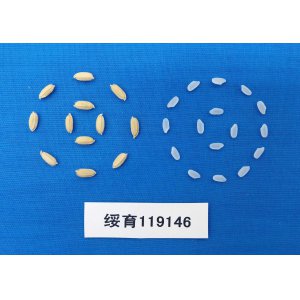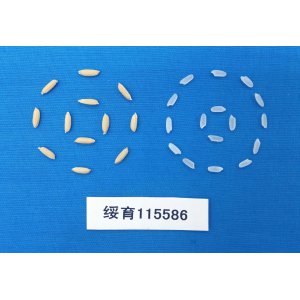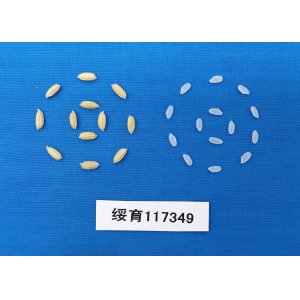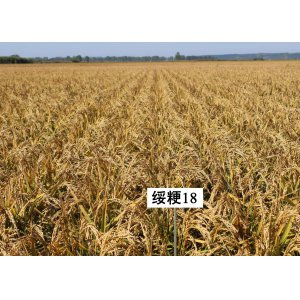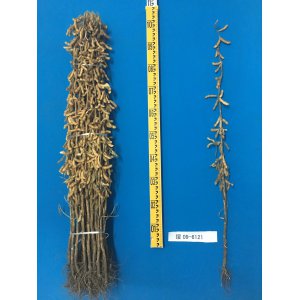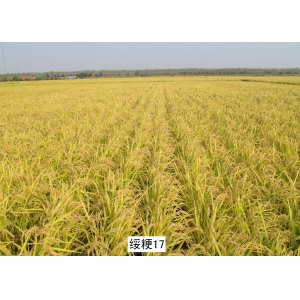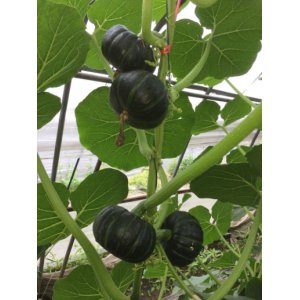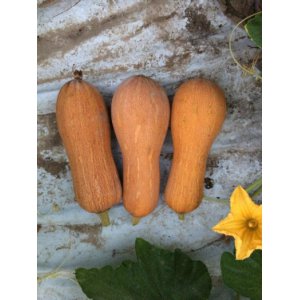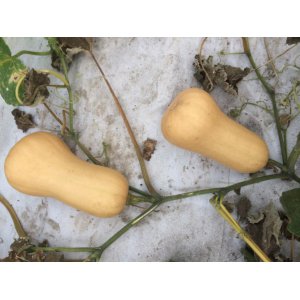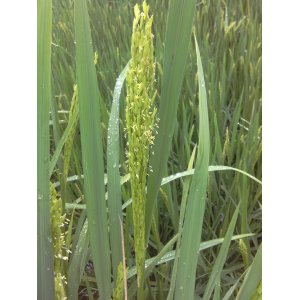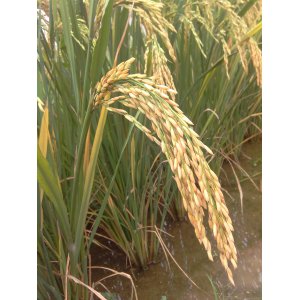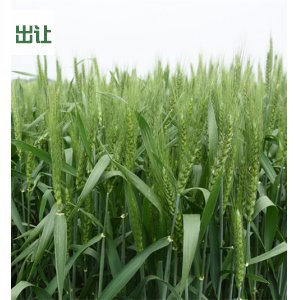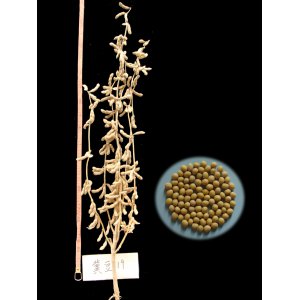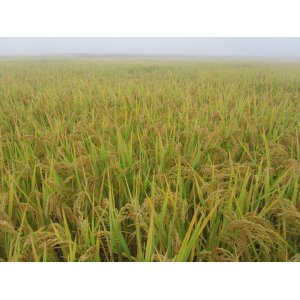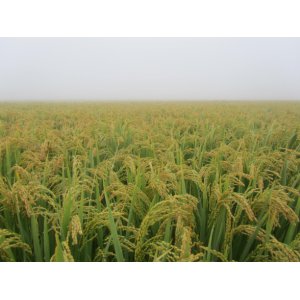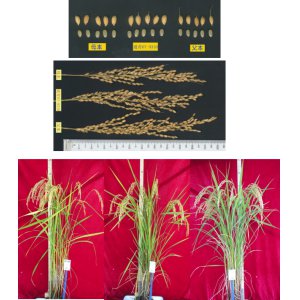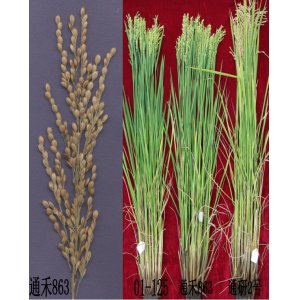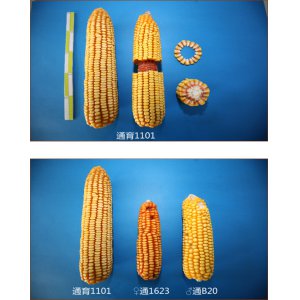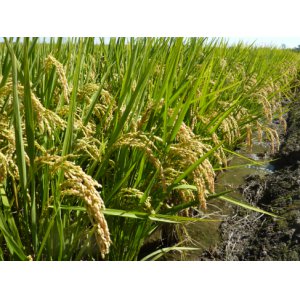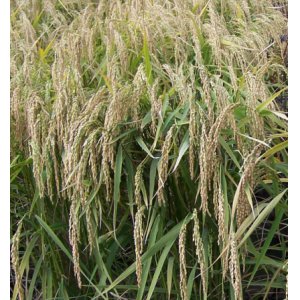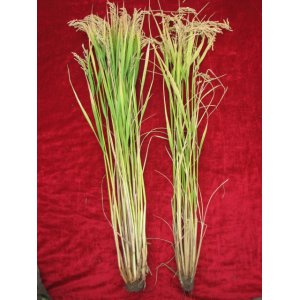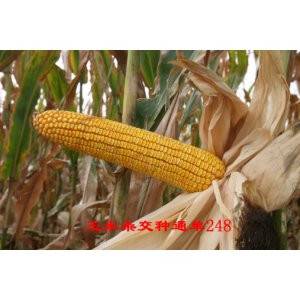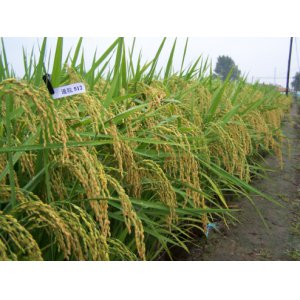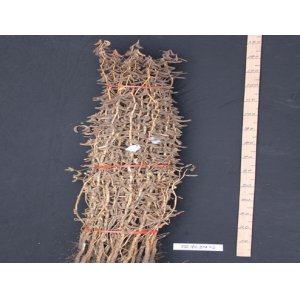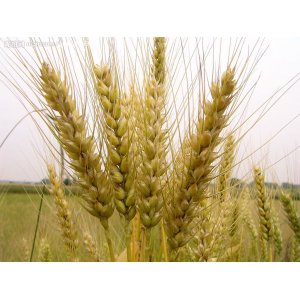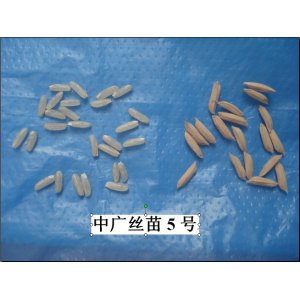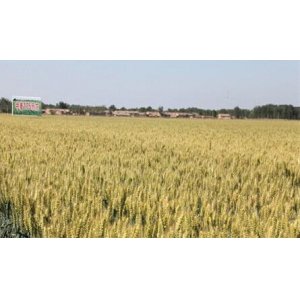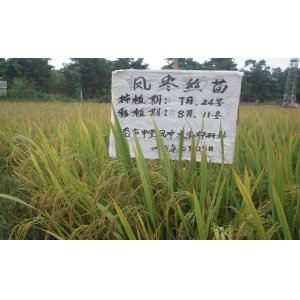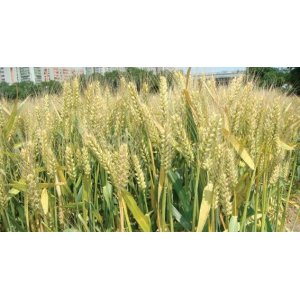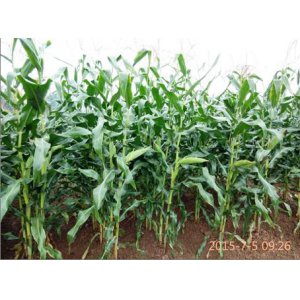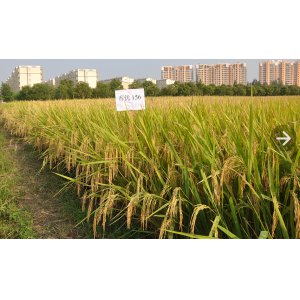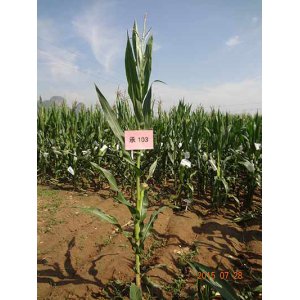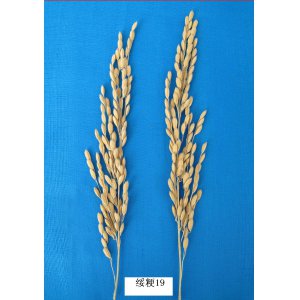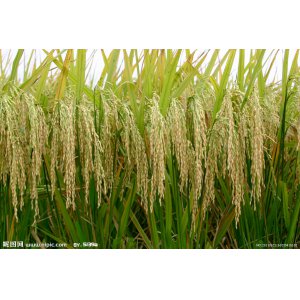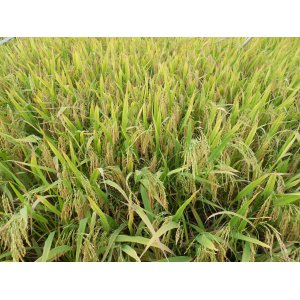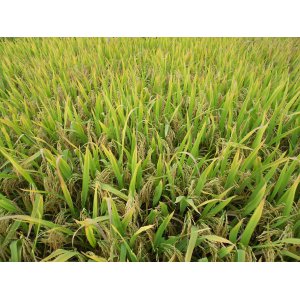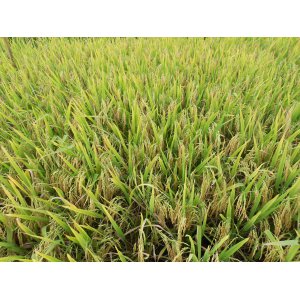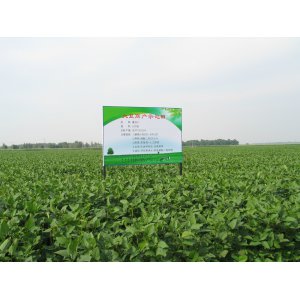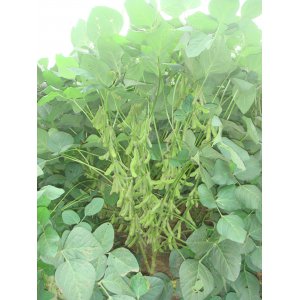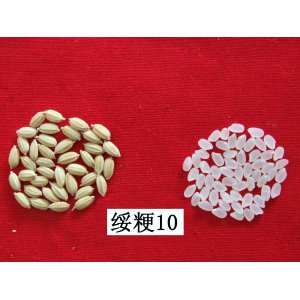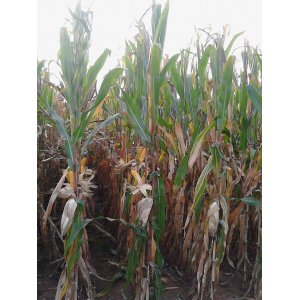2017年8月10日出版的《Nature》杂志关注了中国农业科学院的明星科研工作者们。
以下为原文:
From genomics and molecular breeding to veterinary vaccines, researchers at the Chinese Academy of Agricultural Sciences (CAAS) are contributing to the country’s agricultural development with scientific innovations.
As a plant geneticist, Jianmin Wan’s mission is to decode agronomic traits and develop rice varieties with higher performance for China’s food security. After his doctoral research at Kyoto University, Japan, Wan returned to China in 2000 to launch a thorough exploration of molecular breeding of rice.
Heterosis, or hybridization, is an important approach to increase rice yield. Hybrids between indica and japonica, the two cultivated subspecies common in China, have the potential to increase yield by 15-30%, but the associated low fertility, lodging and delayed flowering limit the exploration of full yield potential. Wan’s team has unearthed a series of key genes controlling these traits and, by manipulating them, has weeded out the limits. As a result, two cultivars they developed, issued as ‘super rice’ by China’s Ministry of Agriculture, are grown on more than 1.5 million hectares of farmland.
Wan’s team also made a breakthrough in the control of rice tillering by discovering a hormone signalling pathway. The work was published in Nature and recognized as one of China’s 2014 Top 10 Achievements in Science and Technology.
For rice protection, Wan’s team has identified and cloned several disease-and-pest-resistant genes and demonstrated their value in reducing damage caused by biotic stresses. His research has helped to control the spread of rice stripe virus in southern China and the threat from brown planthoppers.
Wan’s journey of scientific exploration is ongoing. “There are still lots of puzzles in rice breeding for us to solve,” said Wan.
Zhonghu He’s agricultural science ambition began as a boy in a hilly village of Shaanxi province in Northwest China. Having suffered severe food shortages, he hoped to one day produce enough wheat to ensure enough noodles for his family and fellow villagers during times of drought. Now He is leading a joint wheat breeding program between CAAS and the International Maize and Wheat Improvement Centre (CIMMYT), investigating the molecular basis of noodle quality. Following his childhood dream, he is attempting to develop wheat varieties suitable for both irrigated and rain-fed environments.
“Noodles have been the main food in China for over two thousand years. However, little is known about improving its quality by wheat breeding,” said He. “I am excited about using new approaches, such as genomics, to unlock the mechanism of noodle qualities.”
Having identified colour, protein quality and starch pasting as key variables of noodle quality, He cloned genes controlling for desirable noodle colours and developed gene specific markers which are now used in more than 18 countries. This led to bright white noodle varieties with an excellent taste.
As a result of He’s effort, a new wheat variety, Zhongmai 175, was developed, producing tasty, high-quality noodles. “It also has excellent disease resistance and produces top yields in normal years as well as in extremely dry seasons,” said Shi Jubao, a specialist in Gansu province. For He, acceptance of the new variety by farmers is his best reward. As a result of He’s effort, a new wheat variety, Zhongmai 175, was developed, producing tasty, high-quality noodles. “It also has excellent disease resistance and produces top yields in normal years as well as in extremely dry seasons,” said Shi Jubao, a specialist in Gansu province. For He, acceptance of the new variety by farmers is his best reward.
He is also establishing collaboration with international experts to bring new technologies and genetic material to China, facilitating the development of new wheat varieties.
Fuguang Li is committed to answering the big questions about the genetics and evolution of cotton. A renowned cotton geneticist and director of the Institute of Cotton Research at CAAS, Li and colleagues are mapping the whole cotton genome, contributing to molecular breeding of this major cash crop.
Li led a group sequencing the genomes of several cotton species, ranging from a wild species native to northern Peru, to one endemic to Asia. Their studies have revealed the evolutionary processes of cotton species, deciphering the mechanisms behind certain traits of commercially-used cotton. These revelations will be used to develop tools for manipulating essential genes for cotton with optimal traits.
Li also hopes to use genetic engineering tools to improve cotton production. Genetic transformation of cotton is usually unpredictable and time-consuming. Li and colleagues have studied the differentiation of cotton somatic cells and developed a method that greatly improved efficiency of the process. They tested 156 genes, making cotton a target crop for large-scale testing of gene functions.
Li’s genetic study has provided rich germplasm resources for cotton breeders. He and colleagues have developed 32 new pest-resistant or disease-resistant cotton varieties which are widely cultivated in China across more than 21.4 million acres of land, bringing significant socioeconomic benefits.
As a little boy, Sanwen Huang used to wonder why some cucumbers tasted more
bitter than others. Now, a renowned plant genomicist Huang is unlocking the answer: that each biological trait is genetically coded.
Huang became the youngest principal investigator at CAAS, after undertaking PhD research at the Wageningen University of the Netherlands. “Sequencing was expensive then, but I believed that genomics must be the future direction of life sciences,” Huang said.
Huang’s first task was to decipher the potato genome, a difficult feat in the early days. But when next-generation sequencing technologies emerged, Huang seized the opportunity and tried the cucumber genome — only a third of the size of the potato genome.
His team became the first to sequence a plant genome using the technology. They followed with success on the potato genome, and made progress with tomato, Brassica and watermelon genomes.
Studying the whole set of genetic variations. Huang’s team has collected 3,342 cucumber lines from around the world and identified a core of 115 diverse lines, representing 75% of the entire variety. These lines were sequenced, leading to the identification of more than 3 million single nucleotide polymorphisms (SNPs). With this dataset, Huang revealed a timeline of cucumber domestication and migration, which was consistent with historical records.
Huang also found that partially domesticated cucumbers would become bitter under stress. His discovery of the molecular mechanism of cucumber bitterness provided breeders with a tool to develop improved varieties.
Huang’s team is now building a chemical genetic roadmap to breed tastier tomatoes. “I believe that genomics can help people live better,” said Huang. “That’s why I enjoy my research.”
At the centre of Kongming Wu’s work is the aim of protecting the crop security that is key to China’s thriving agricultural industry, while preserving the delicate ecosystem.
Wu, as a vice president of CAAS, and lead investigator at the Institute of Plant Protection in Beijing is at the forefront of research on agricultural pest monitoring and crop management. He is renowned for his work on cotton bollworm control and the interaction of Bt cotton with the ecosystem, which has been published in Science, Nature and PNAS.
Bt cotton has been genetically modi ed to produce a bacterial toxin (Bt), deadly to the larvae of the cotton bollworm moth. Its commercial cultivation in China has been credited with reducing the need for chemical pesticides, but brings its own problems. Pests can develop resistance, and the impact on non-target insect species is still unknown.
Wu’s team is creating a broader picture of the impact of Bt cotton cultivation on the agricultural ecosystem. He has developed a strategy of controlling and delaying evolution of resistance by the cotton bollworm. The ‘multi-crop’ system involves planting non-Bt crops to act as a natural refuge for insects that are susceptible to the Bt cotton and reduces the likelihood of resistant offspring.
Furthermore, Wu and his team have characterised the geographical distribution
of China’s cotton bollworm population, mapping its movement and finding that moths were influenced by conditions created by the East Asian Monsoon to migrate
to northern China, before moving back southward. This knowledge has contributed
to the development of radar monitoring and data analysis technology that account for the atmospheric, rainfall and meteorological factors to make better predictions about movement of the pest.
Virologist Hualan Chen was on the frontline when the new avian in uenza A (H7N9) virus emerged in China in 2013, working tirelessly with her team to test nearly a thousand environmental samples to locate the source of the virus. Chen’s findings linked Shanghai’s live poultry markets as a major origin of H7N9 cases and the work was a major factor in China’s rapid response to limit the outbreak. Her contribution led to international recognition, and she was listed as one of the ‘Ten people who mattered in 2013’ in Nature and awarded the LOréal-UNESCO Award for Women in Science in 2016.
Chen has long been devoted to the development of vaccines to control avian influenza spread. As the leader of China’s National Avian influenza Reference Laboratory, she has helped with the molecular mapping on the evolution and virulence of the H5N1 influenza strain, identifying potential genes in the virus that support transmission between mammalian hosts. Chen’s continual surveillance on emerging zoonotic viruses helps health organisations monitor and prepare for potential pandemics.
Chen and her team have also been awarded six vaccine-related patents in China and developed a series of avian influenza vaccines—a novel inactivated H5N1 vaccine and the recombination and application of two live virus—vectored H5 vaccines. More than 200 billion doses of the vaccine have been administered in poultry in China and other countries, shielding the industry from future outbreaks.
An excellent teacher committed to enhancing global reach, Chen and her colleagues have visited countries across Asia and Africa to offer training and technical support. She
is keen to contribute to the prevention and control of emerging influenza strains.
As a plant virologist, Xueping Zhou’s ambition is to fight infection and improve crop yields. He undertook his PhD and postdoctoral studies entirely in China to ensure his research was relevant to challenges faced by domestic farmers.
For instance, rice stripe virus (RSV), mainly transmitted by the small brown planthopper, is a major threat to rice yields. Zhou and his collaborators found that RSV spends the winter on wheat and pioneered multifaceted responses. Their methods included reducing wheat cultivation in major rice areas, applying selective pesticides in the spring to eradicate planthoppers and curb virus migration from wheat fields, and delaying rice planting to avoid RSV migration peaks. Their efforts have significantly reduced infestations.
As well as raising sensitive monoclonal antibodies against plant viruses and using them
to design methods for virus detection in crops and vectors, Zhou has made significant contribution to understanding virus pathogenesis. He led a team in the study of molecular functions of geminiviruses and their associated DNA satellites, which infect many crops across the world. They identified 42 geminiviruses, including 32 distinct new species, and demonstrated that 17 are associated with a novel type of DNA satellite that coevolves with the viral DNA. The research suggests that geminivirus variants have heterogeneous genomes with characteristics and mutation rates similar to those of RNA viruses, and that many geminiviruses in China originate from recombination.
Zhou has recently been immersed in the study of βC1, a protein encoded by betasatellite, to demonstrate how it interacts to affect host gene silencing
in tomato and tobacco plants. He found that the βC1 protein suppresses methylation activities that interfere with epigenetic modifications of the viral genome and that βC1 also facilitates virus spread by lowering plants’ defences.
“By expanding understanding of plant virus pathogenesis,” said Zhou, “I hope we can design effective approaches to disease management.”
Xing-Quan Zhu has studied parasites since his career began at the graduate school of CAAS. His interest grew during his doctoral study at the University of Melbourne, Australia. Now as Professor and Head of the Department of Parasitology at Lanzhou Veterinary Research Institute, CAAS, Zhu is continuing to pore over the molecular biology of parasites. As a leading figure in parasitology in China, Zhu was recognised as the first parasitology recipient of the ‘Chang Jiang Scholar’ award.
Zhu’s investigations are now focused on the genomics, transcriptomics, proteomics, metabolomics and microRNAs of parasites. He believes complete molecular blueprints are the key to innovative methods for molecular detection and diagnosis of parasites, vaccine development and improved control of parasitic infections.
Zhu’s team was the first to sequence the genetic code of the zoonotic pathogen Toxocara canis, a roundworm that can severely harm dogs and humans (especially children). Unravelling the genetic information, they predicted intervention targets and found enzymes associated with the degradation of body tissues of the infected hosts, and molecules that may be responsible for suppressing host immune responses.
Zhu has also conducted genomic and genetic studies on other major parasites, such asToxoplasma gondii, typically reproduced in cats, and the liver flukes, Fasciola spp. The research has laid the foundation for developing anti-parasite drugs, vaccines and diagnostic agents.










